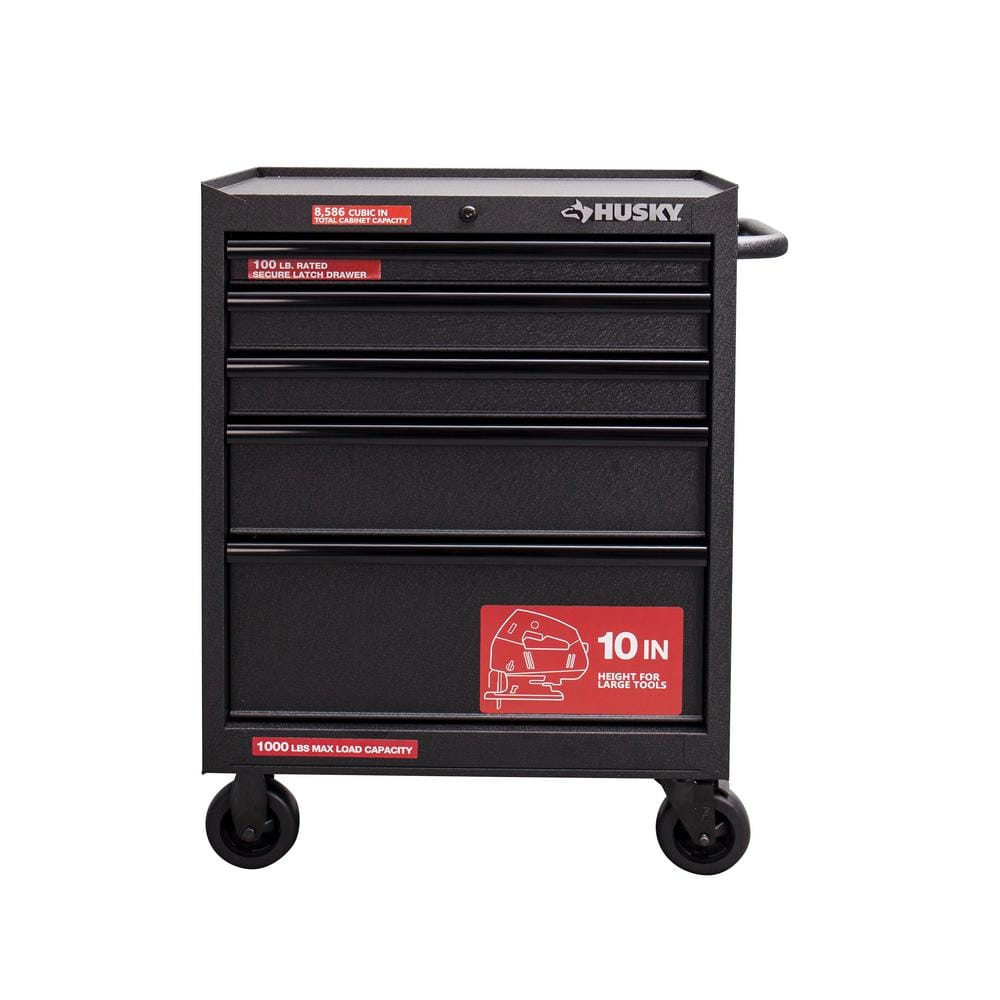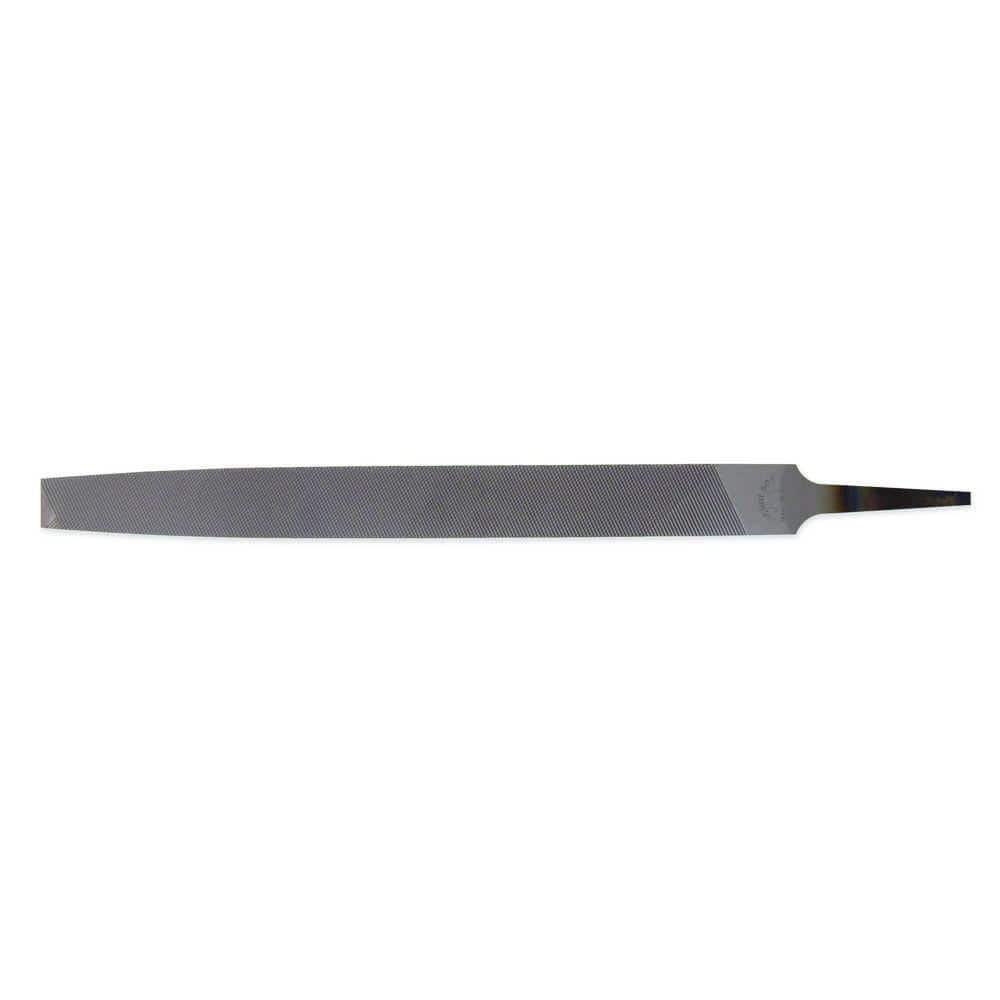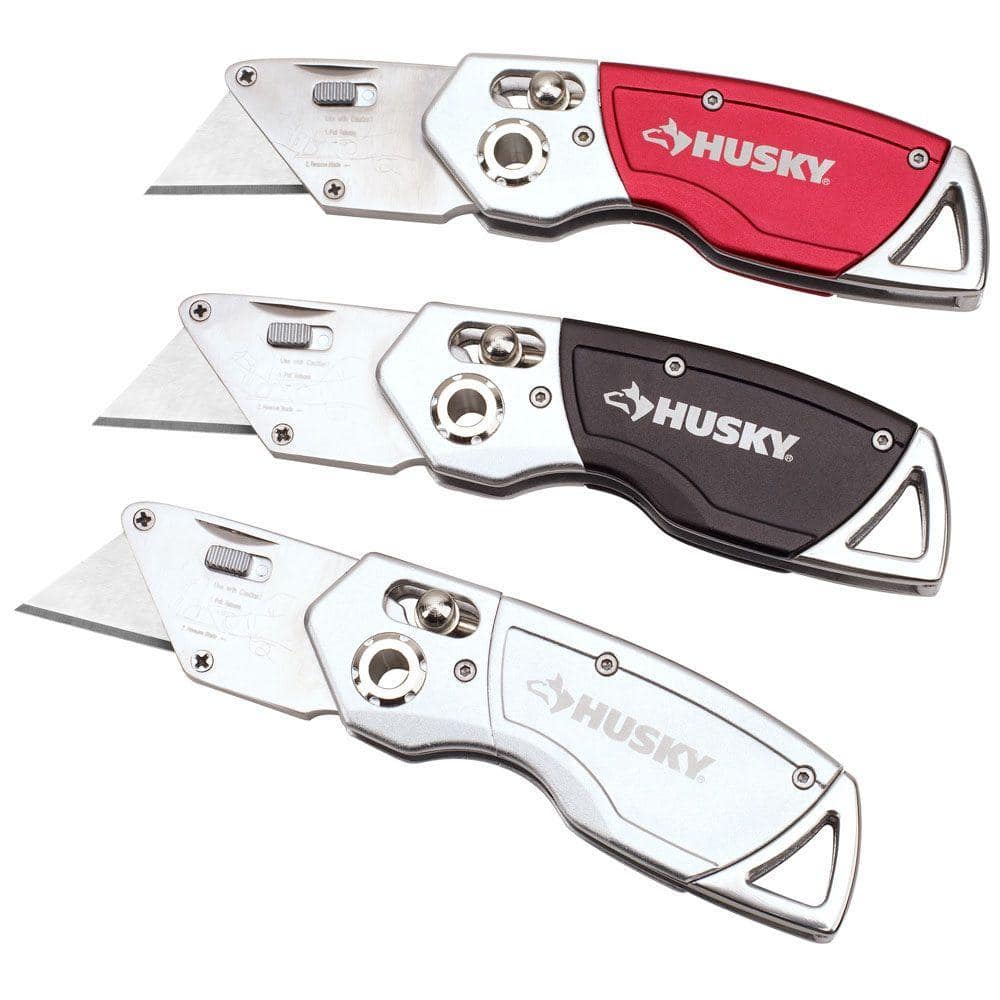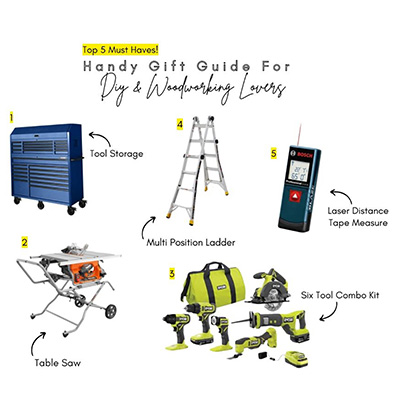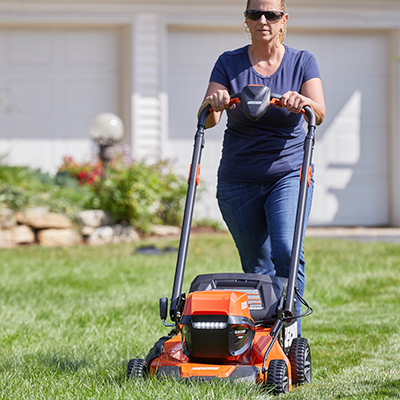Types of File Tools
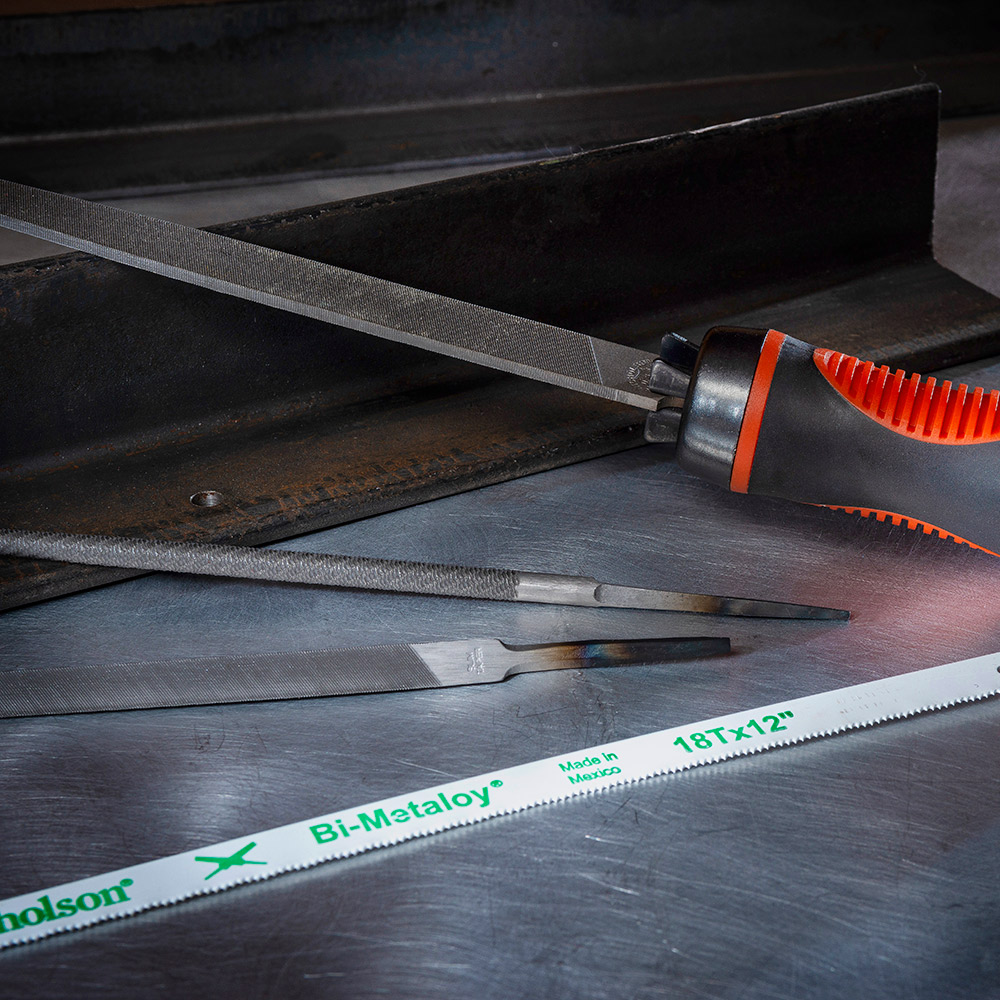
Last updated September 7, 2023
Files and rasps are essential tools that help skilled tradespeople and woodworkers smooth wood to a professional finish. Rasps are generally used for aggressive work with unfinished wood while files offer a slightly more refined finish. This guide discusses the features and benefits of both.
Table of Contents
What's the Difference Between a Rasp and a File?
Which Shape of Rasp or File Should You Use?
How Does Grade Affect the Rasp or File for a Project?
How to Care for and Use Rasps and Files
Special Features of Rasps and Files
What's the Difference Between a Rasp and a File?
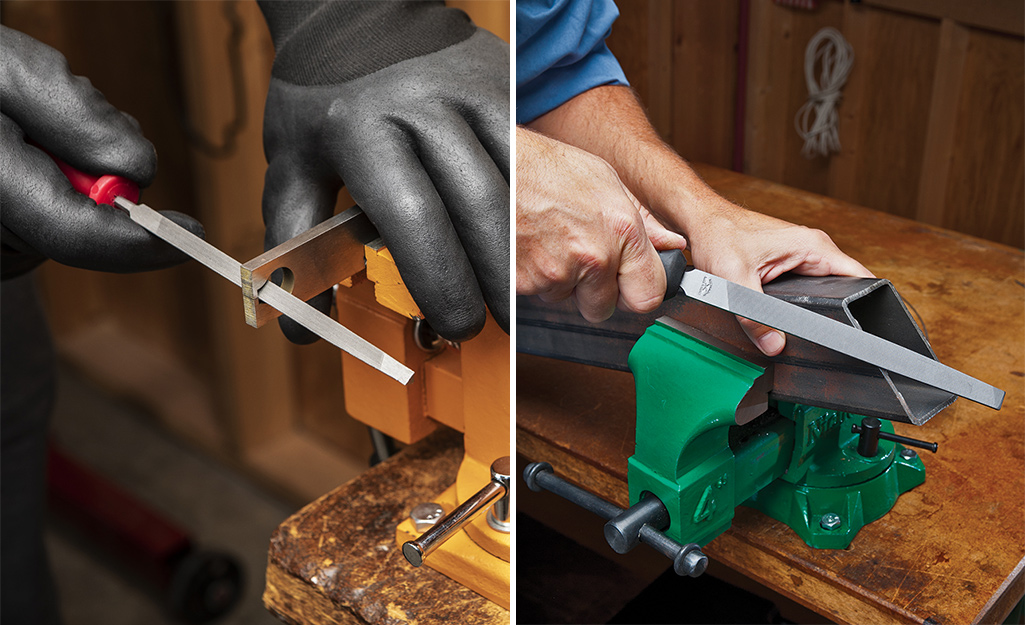
When choosing between a file and a rasp it’s important to consider the material you’re working with and how fine of a finish you need.
Files feature parallel, diagonal rows of teeth that form ridges across the surface. Each of the sides is either cut and has teeth or uncut and is smooth. Files plane wood to a smooth finish.
- Single-cut files have one set of teeth and are used to provide a somewhat smoother finish or create a sharp edge on knives, shears or saws. Use light pressure when working.
- Double-cut files feature a second set of teeth that cut in the opposite direction and are used for more aggressive filing, shaping or removing rust from metal and smoothing wood. Use heavier pressure when working.
- Curved-cut files feature curved contours across the face of the file and are used for a variety of automotive applications, such as smoothing body panels. They can also be used for working with plaster and fiberglass.
- Rasp-cut files feature a series of individual teeth and are used primarily on wood.
Rasps feature individual teeth that are randomly placed to provide a faster, rougher cut. Rasps scrape wood away rather than plane it like files.
- Wood rasps have a very coarse surface and are used primarily for quick removal of stock.
- Cabinet rasps are best suited for finer, more delicate work and can be used on wood of all types, leather or soft materials.
- Patternmaker’s cabinet rasps provide a smoother finish.
Which Shape of Rasp or File Should You Use?
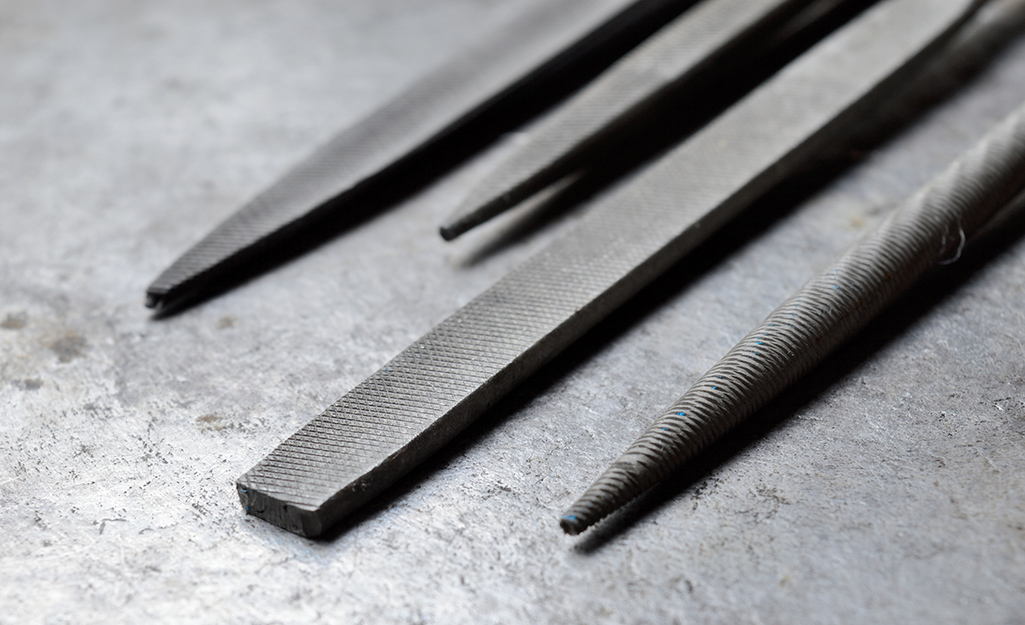
Files and rasps come in several different shapes:
Flat, Mill or Hand Shape:
- Features straight edges and a flat surface with a series of parallel teeth
- Flat files taper in width and thickness from the middle outward
- Mill files taper in width and thickness all the way through
- Hand files taper only in thickness and feature a square point
Half-Round Shape:
- Has both a flat face and a curved face
- Features concave surfaces, edges and holes
- Flat face can be used for filing flat surfaces
- Curved face is ideal for use on grooves
Round Shape:
- Circular design features teeth all the way around (Also called “rat-tail”)
- Enlarges round openings
- Removes burrs from metal
Square Shape:
- Features four cut sides
- Enlarges rectangular openings
Triangle Shape:
- Features two cut sides and one uncut side
- Also called "taper" or “threesquare”
- For work on acute internal angles
- Squares corners
- Files grooves
- Sharpens saw teeth and other tools
How Does Grade Affect the Rasp or File for a Project?
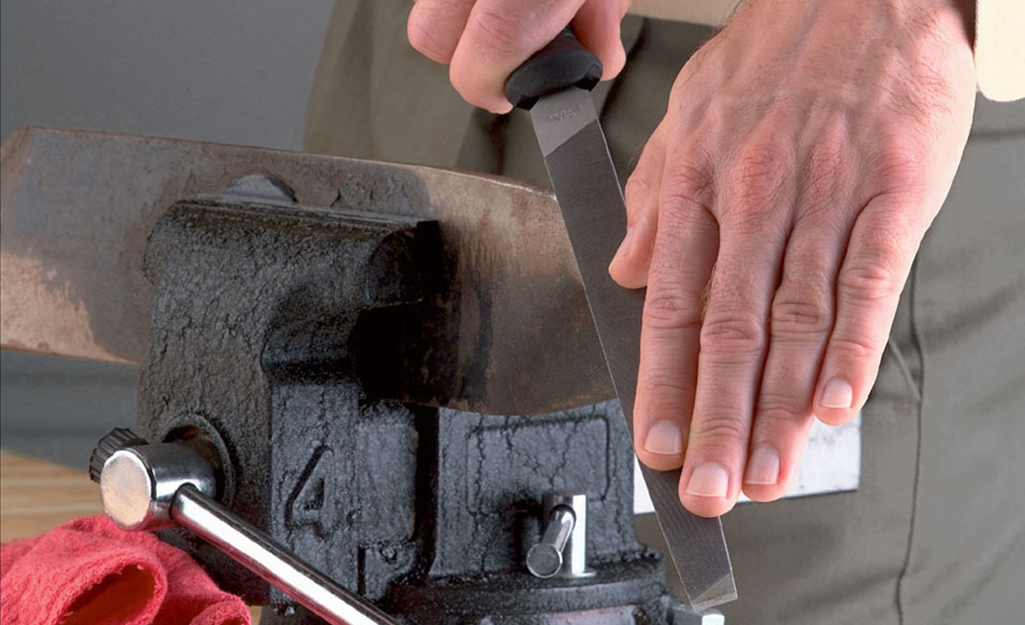
File grades are often broken down into bastard cut, second cut or smooth cut. Bastard cut is the coarsest grade and is used to remove material quickly. Second cut can also be used for fast removal, but it provides a slightly smoother finish. Second cut is also known as medium cut. Smooth cut features a fine grade best used for finishing work and preparing surfaces for sanding.
Rasp grades include bastard, cabinet and wood. Unlike files, a rasp bastard cut is the finest grade. Cabinet cut is also known as medium cut. Cabinet- and wood-grade rasps remove material quickly.
How to Care for and Use Rasps and Files
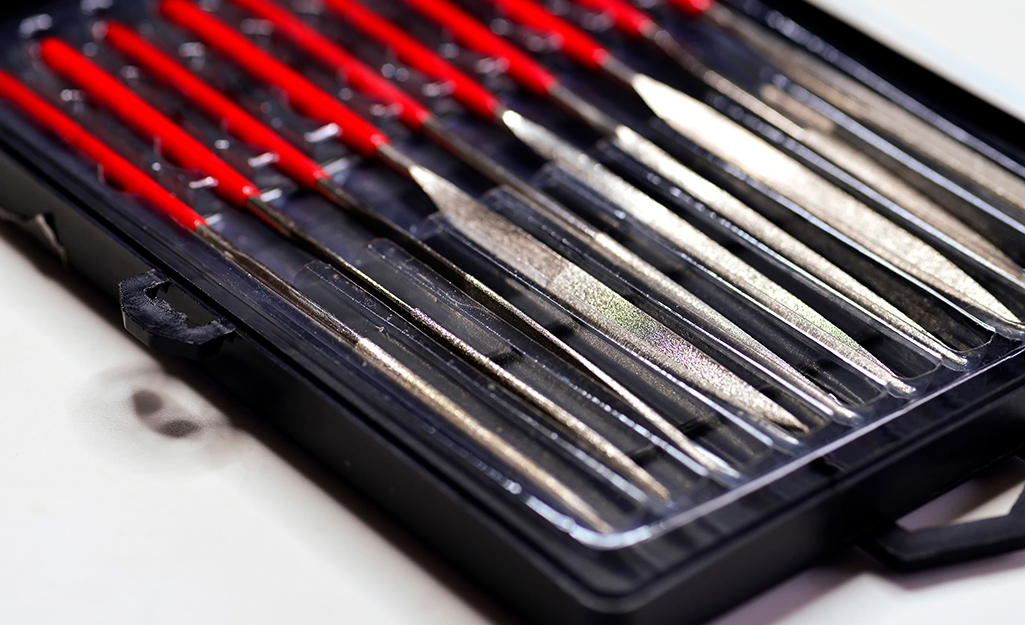
It’s important to choose the right combination of shape, size and grade for your project. Also, proper care and usage is key to safe and effective use of your rasp or file. And be sure to use each tool only for its intended purpose. Otherwise you could damage the surface you’re trying to smooth.
- When using either tool, push outward across the surface, adjusting pressure as needed based on the type of material you’re working with.
- Lift the tool at the end of the stroke and bring it back to the starting position before allowing it to touch the surface again.
- When files become clogged, clean with a wire brush or file card. Rub chalk on the surface of the tool to prevent clogging.
- Always work in a well-ventilated area and use respiratory protection when necessary.
- Keep files in protective sleeves or slotted racks when not in use to prevent them from scraping against each other.
Special Features of Rasps and Files
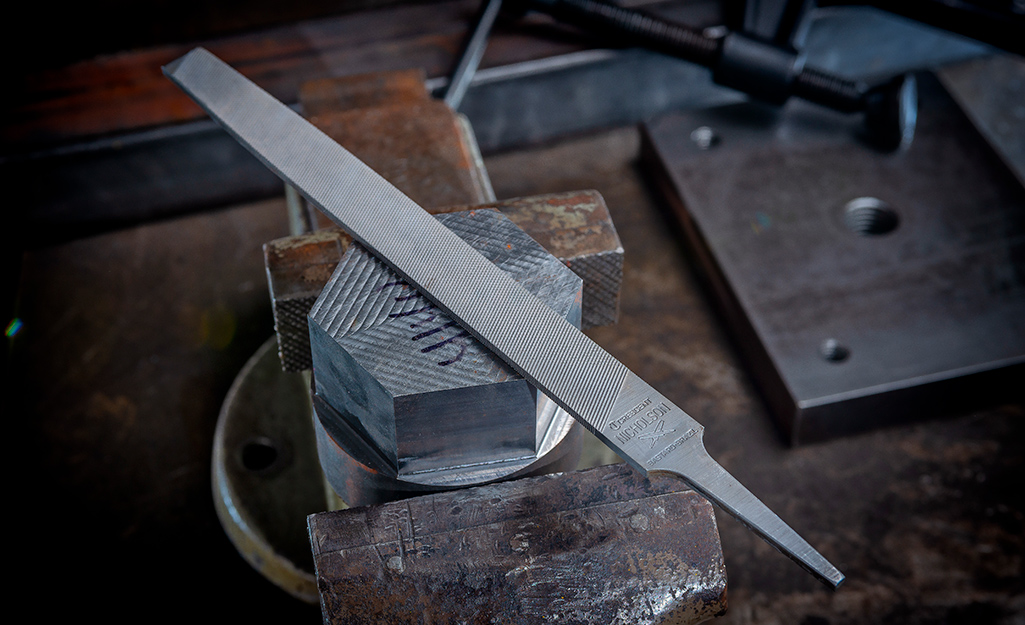
Special features of rasps and files make them easier to use.
4-in-1 Tool. A multi-faceted tool provides the right tool for many different tasks. Some files are designed with both round and flat surfaces and others feature a file and rasp in one tool.
File Card. Use a file card to get in between the teeth of files and rasps to clean out sawdust, metal shavings and other debris.
Diamond File. This feature is made of ground diamond particles that make them well suited to industrial applications. Best used when working on fiberglass, epoxy and other hard surfaces. Smaller diamond files work well on glass, ceramic and various metals.
The Home Depot Mobile App has a wide array of rasps and files with descriptions so that you can choose the tool that best fits your job. If you need help making the right choice, visit The Home Depot to get advice from a Pro.
